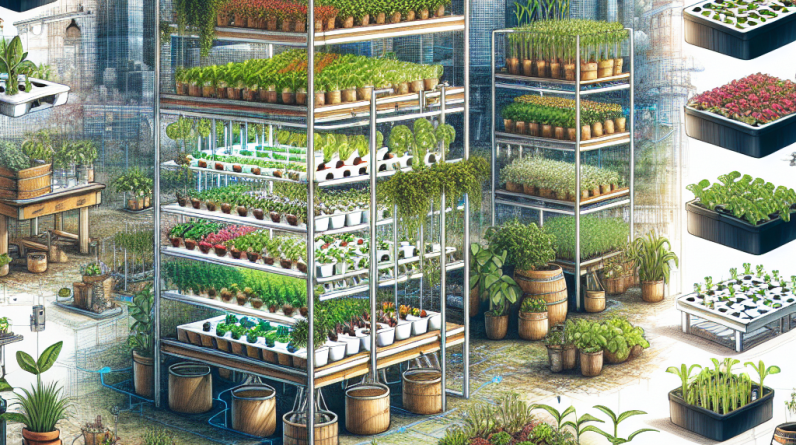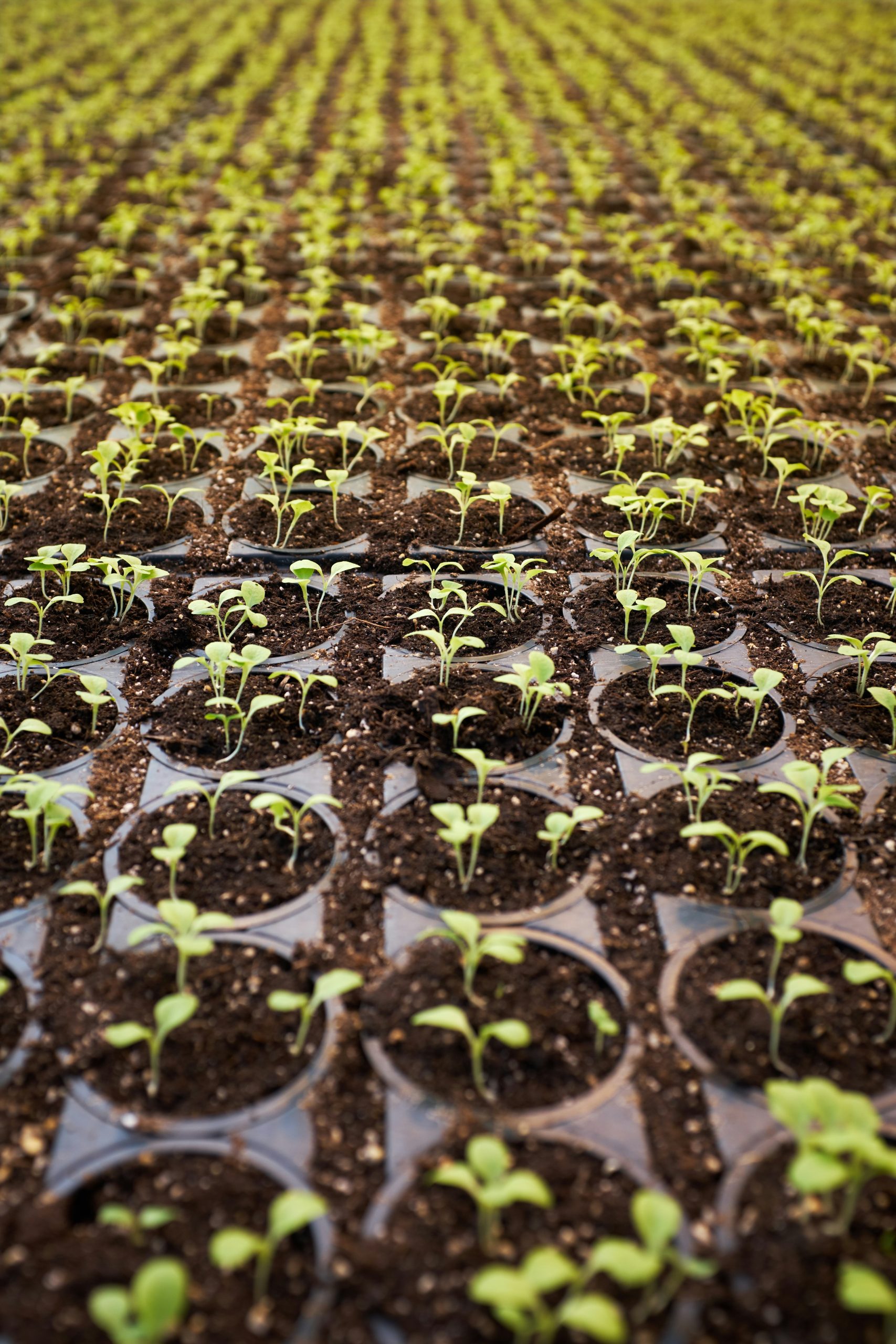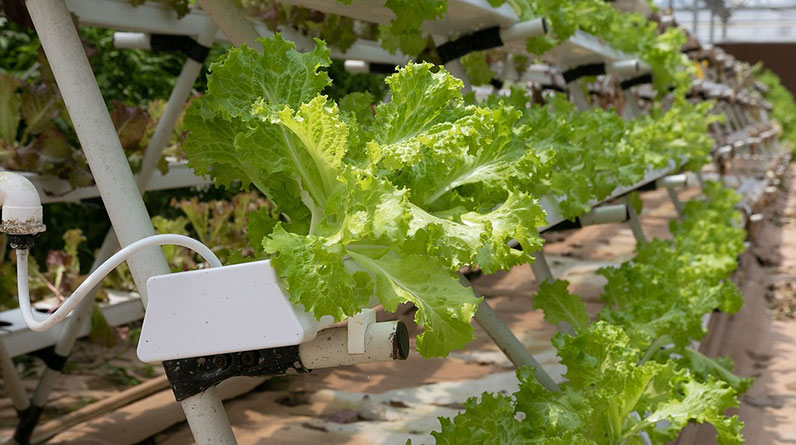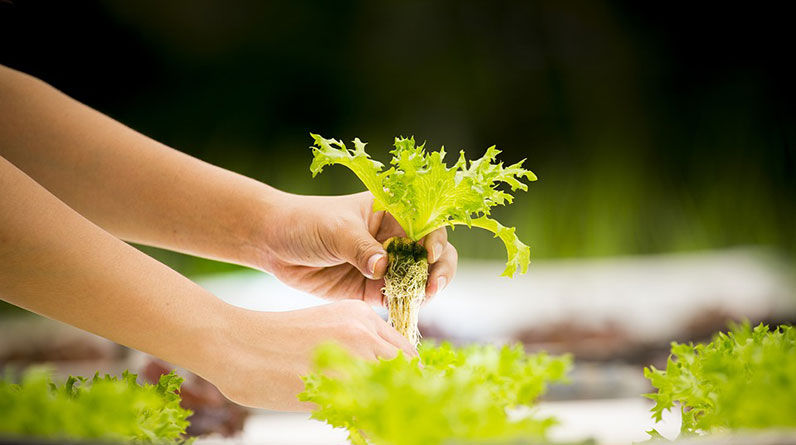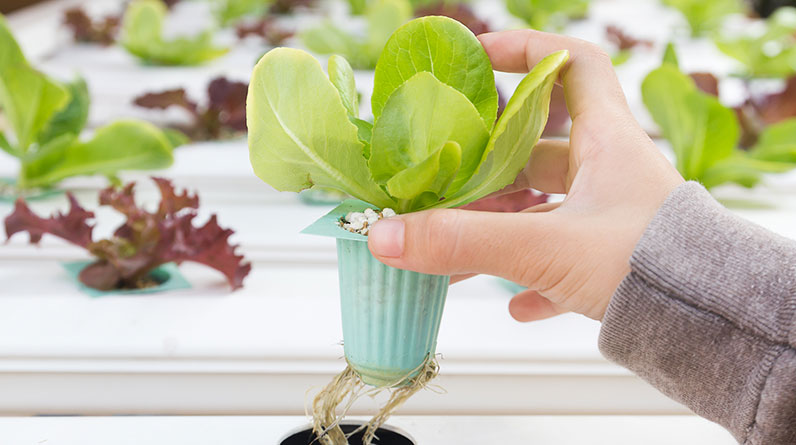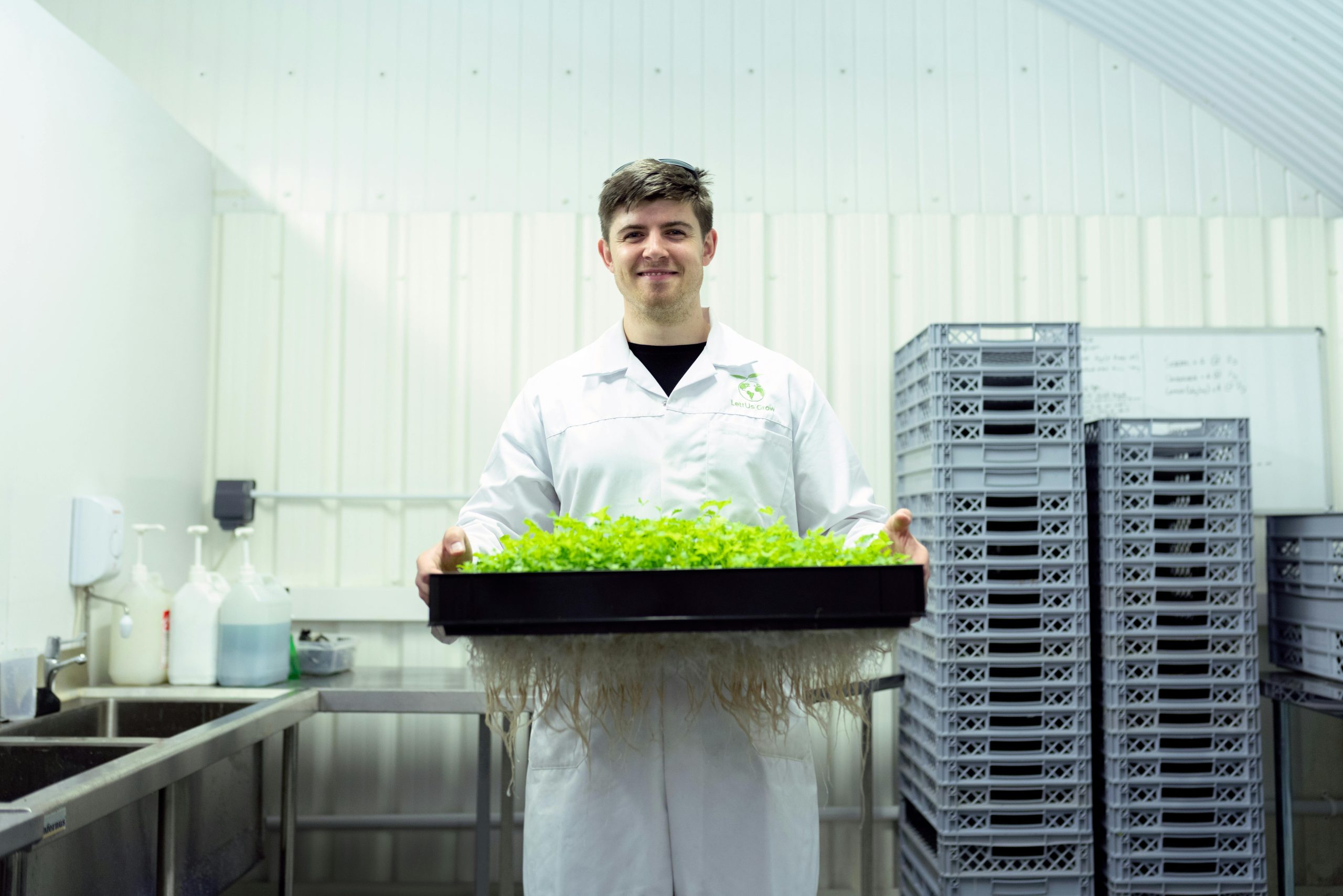
As the popularity of hydroponic gardening continues to surge in 2025, home growers and commercial farmers alike are seeking the best hydroponic vegetables to cultivate for maximum yield and flavor. Growing vegetables hydroponically offers numerous advantagesâfaster growth, less water usage, and the ability to farm in limited spaces. In this ultimate guide, Iâll walk you through the top 10 best hydroponic vegetables to grow in 2025, sharing practical tips, data, and insights based on recent trends and my own experience.
1. Lettuce
Why Lettuce Tops the List
Lettuce remains one of the most popular best hydroponic vegetables for indoor and small-scale setups because itâs quick to grow and highly productive. In 2025, innovative varieties like butterhead and romaine are increasingly favored for their crisp texture and flavor. They thrive in hydroponic systems like NFT (nutrient film technique), making them a beginner-friendly choice.
Growing Tips for Lettuce
Lettuce grows best in cooler temperatures, between 60-70°F, with consistent lighting. Ensure your hydroponic system provides adequate moisture and nutrients, especially nitrogen, to promote lush, leafy growth. Regularly harvest the outer leaves to encourage continuous growth. A practical tip is to stagger planting dates to have a steady supply throughout the year.
Data from recent studies show that hydroponic lettuce can grow up to 2-3 times faster than traditional soil methods, with some varieties reaching harvest in under 30 days. For optimal results, use pH levels around 5.8-6.2 and monitor nutrients meticulously.
2. Tomatoes
Hybrid Varieties for Hydroponics
Tomatoes are undeniably among the best hydroponic vegetables for 2025, especially with improved hybrid varieties that resist pests and diseases. Cherry and grape tomatoes are particularly popular in hydroponic setups because of their high yield and flavor profile. Their vigorous growth requires a sturdy support system, making trellising essential.
Growing Tips and Challenges
Success with hydroponic tomatoes hinges on managing temperature, humidity, and lighting. Maintain daytime temperatures around 70-80°F and keep the humidity below 70% to prevent fungal issues. Consistent nutrient solutions with sufficient potassium and calcium are vital for fruit development. A common challenge is blossom end rot, which can be mitigated by ensuring calcium levels are adequate.
By 2025, advances in nutrient delivery and automated pH control have made growing robust hydroponic tomatoes easier than ever. Expect plants to produce ripe fruit in about 60-70 days from planting.
3. Cucumbers
Why Cucumbers Are a Top Choice
Cucumbers are excellent best hydroponic vegetables to include in your 2025 garden, especially for those wanting a quick-growing, high-yield crop. Their preference for warm, humid environments makes them ideal for hydroponic systems like Dutch buckets or vertical towers. They also tend to produce continuous harvests over several months.
Growing Tips for Cucumbers
To succeed, provide ample space for vine growth and use trellises or strings for support. Keep nutrient levels high, emphasizing potassium and magnesium, to promote healthy fruit development. Managing vine diseases such as powdery mildew involves good airflow and sanitation.
Recent research emphasizes the efficiency of hydroponic systems in reducing water waste while boosting cucumber yieldsâup to 20% more than soil-based cultivation in controlled environments.
4. Spinach
Growing Spinach Hydroponically
Spinach remains one of the best hydroponic vegetables for leafy greens, especially in 2025 where demand for fresh, nutritious greens is rising. Its fast growth cycleâabout 30 daysâmakes it a favorite for continuous harvests. Spinach adapts well to nutrient film technique (NFT) systems or shallow ebb-and-flow setups.
Tips for a Successful Spinach Crop
Maintaining cool temperatures between 50-70°F is essential since spinach bolts quickly in heat. Use a balanced nutrient solution rich in iron and nitrogen to promote vibrant, tender leaves. Harvest leaves selectively to prolong production and avoid bolting.
Data shows that hydroponic spinach often produces higher yields per square foot compared to traditional methods, with some farmers reporting a 40% increase in productivity.
5. Peppers
Best Pepper Varieties for Hydroponics
Bell peppers, jalapeños, and other hot peppers have become staples among the best hydroponic vegetables to grow at home or commercially in 2025. They are nutrient-hungry plants with high yields and a long harvest period, especially when grown in enriched hydroponic systems.
Growing Tips for Peppers
Provide consistent warmth and lightâideally 12-16 hours per dayâto optimize fruiting. Strong support structures minimize plant stress and prevent breakage. Regularly check and adjust nutrient concentrations, particularly phosphorus and potassium, for superior fruit quality.
Research indicates that hydroponic peppers can produce 2-3 times more fruit per plant than soil-grown counterparts, especially in controlled environments with optimized lighting.
6. Basil
Why Basil Is a Must-Grow
Basil is arguably one of the best hydroponic vegetables for fresh culinary use in 2025. Its quick growth cycleâjust 3-4 weeksâand high yield make it a favorite for chefs and home gardeners. Hydroponic basil is particularly appreciated for its intense flavor and year-round availability.
Growing Tips for Basil
Ensure adequate LED lighting with a spectrum that promotes lush foliage. Maintain pH levels around 5.8-6.2 and supply a balanced blend of nitrogen, phosphorus, and potassium. Pinch off flowering stems to encourage bushier growth and higher leaf production.
Basil can be grown in small systems like NFT or deep water culture, making it accessible for small spaces and urban farming setups.
7. Strawberries
Growing Delicious Strawberries Hydroponically
Strawberries continue to be among the best hydroponic vegetables for 2025, especially as urban farming and vertical gardening grow in popularity. Hydroponic strawberries yield larger, sweeter fruit and allow for year-round production in controlled environments.
Growing Tips for Strawberries
Choose ever-bearing or day-neutral varieties for continuous harvests. Use hanging or vertical systems to maximize space efficiency. Keep root zones cool and well-aerated, and supply adequate nutrients, especially potassium and calcium, for optimal fruit quality.
Recent innovations include automated watering and climate control, increasing success rates and fruit consistency.
8. Kale
Kale: A Nutritional Powerhouse
Kale is often called the queen of leafy greens and remains one of the best hydroponic vegetables to grow in 2025 thanks to its resilience and high nutritional value. It grows rapidly and tolerates a wide range of conditions, making it excellent for various hydroponic setups.
Growing Tips for Kale
Keep the temperature between 60-75°F and ensure consistent nutrient supply, especially nitrogen, to promote tender, flavorful leaves. Harvest leaf tops early for continuous growth. Regularly prune and prune off damaged leaves to avoid disease issues.
Studies have shown that hydroponic kale can yield higher biomass and nutrient density than soil-grown versions.
9. Radicchio
Flavor and Aesthetics of Radicchio
Radicchio adds a vibrant color and a unique bitter flavor to salads, making it one of the best hydroponic vegetables to grow in 2025 for gourmet cooks and home chefs alike. Its compact growth makes it suitable for small hydroponic systems.
Growing Tips for Radicchio
Maintain cooler temperatures and consistent moisture. Use nutrient-rich solutions with adequate magnesium to enhance leaf coloration and flavor. Radicchio prefers slightly acidic pH levels (5.8-6.2) and benefits from staking in taller varieties.
Hydroponic radicchio yields faster growth and crisper leaves compared to traditional methods, with some varieties maturing in just 50 days.
10. Microgreens
Why Microgreens Are Trending
Microgreens are among the best hydroponic vegetables for their quick turnaroundâsometimes ready to harvest in just 7-14 daysâand their incredible nutrient density. Theyâre perfect for small urban farms and indoor setups in 2025.
Growing Tips for Microgreens
Use shallow trays with well-draining media and keep LEDs close to the plants to mimic sunlight. Maintain high humidity and proper airflow to prevent mold. A key tip is to harvest microgreens at the early stages for maximum flavor and nutrients.
In recent years, research has demonstrated that microgreens grown hydroponically can contain up to 40 times more nutrients than mature leavesâa significant benefit for health-conscious consumers.
Conclusion
In 2025, choosing the best hydroponic vegetables is easier than ever thanks to ongoing innovations and research. From fast-growing leafy greens like spinach and kale to high-yield fruiting plants such as tomatoes and peppers, the options are plentiful. Whether youâre a beginner or a seasoned grower, integrating these top vegetables into your hydroponic system can lead to bountiful, nutritious harvests year-round. Remember, success hinges on proper environmental controls, nutrient management, and regular maintenance. Start with the right vegetables, and enjoy the rewarding experience of fresh, home-grown produce in 2025!
Frequently Asked Questions
- What are the best hydroponic vegetables to grow indoors in 2025?
- Leafy greens like lettuce, spinach, and kale are top choices due to their fast growth and high productivity indoors.
- How can I maximize yield with hydroponic vegetables in 2025?
- Focus on optimal lighting, precise nutrient control, temperature regulation, and regular pest management.
- Are hydroponic vegetables more nutritious than soil-grown ones?
- Studies suggest that many hydroponic vegetables can contain higher levels of nutrients, especially microgreens and leafy greens.
- Can I grow the best hydroponic vegetables with limited space?
- Absolutely! Vertical systems and small indoor setups are perfect for maximizing space and productivity.
- What systems are best for growing hydroponic vegetables in 2025?
- NFT, deep water culture, and vertical towers remain popular and effective options for diverse vegetables.


